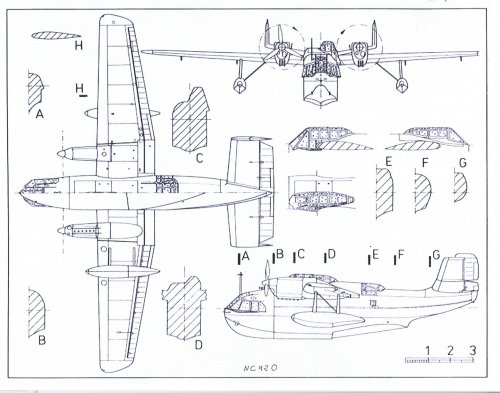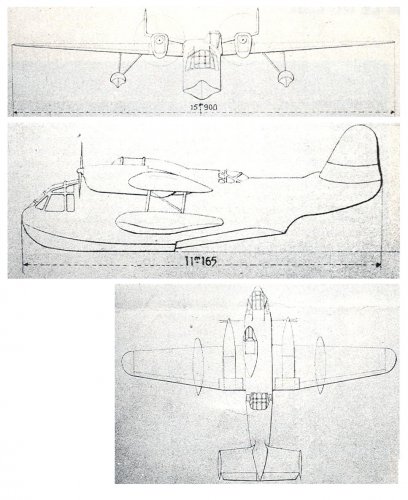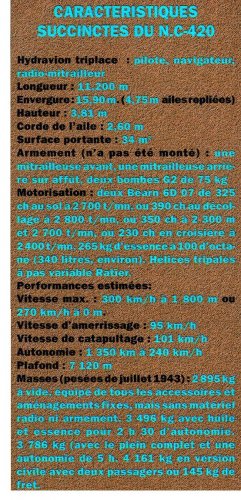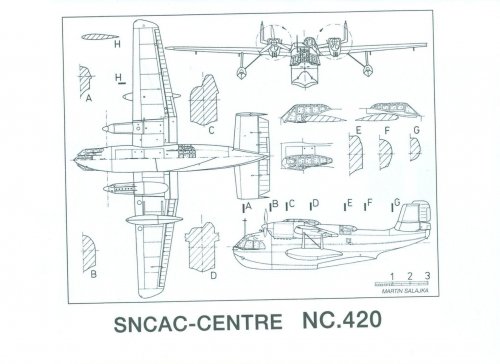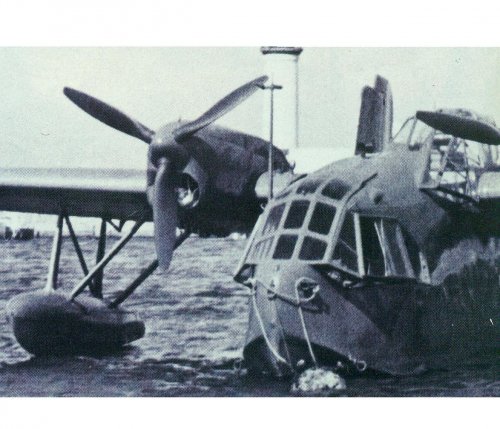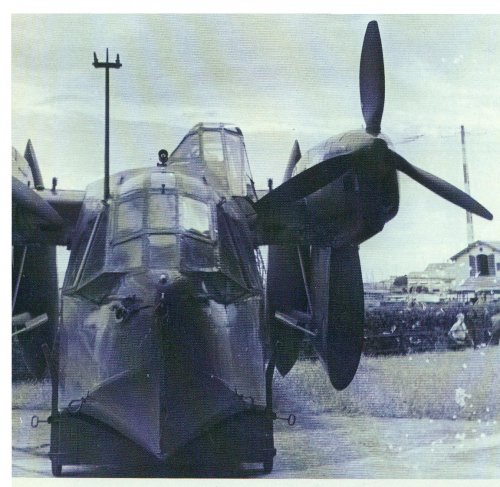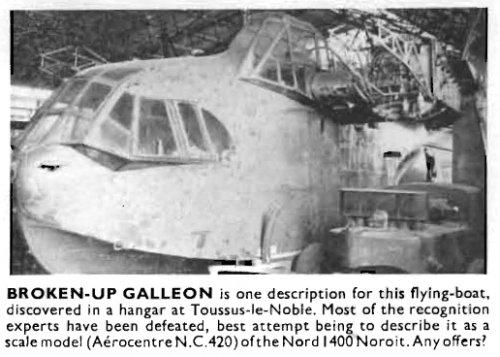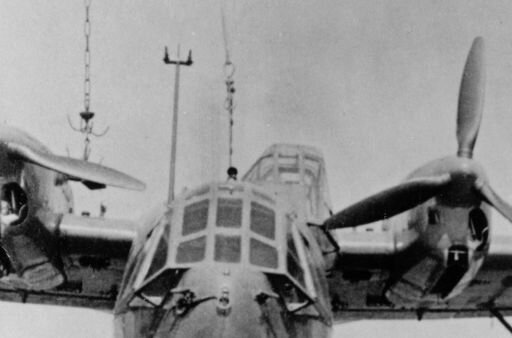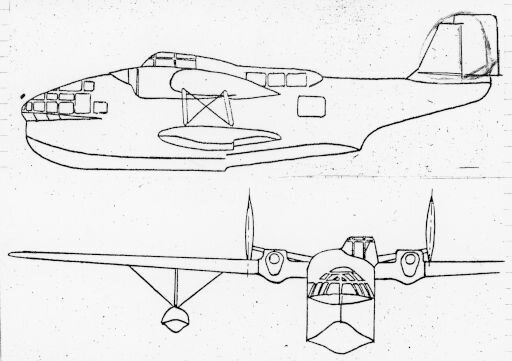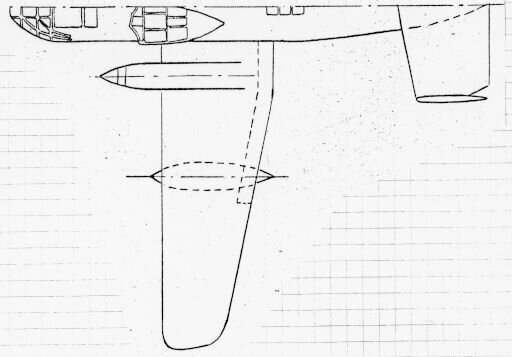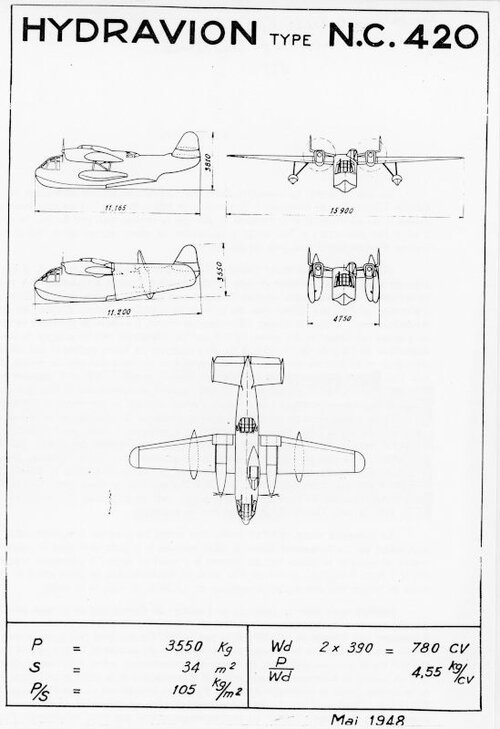You are using an out of date browser. It may not display this or other websites correctly.
You should upgrade or use an alternative browser.
You should upgrade or use an alternative browser.
SNCAC (Centre) NC-420 shipboard catapult-launched flying boat
- Thread starter Justo Miranda
- Start date
- Joined
- 25 June 2009
- Messages
- 14,758
- Reaction score
- 6,165
Tail looks so very different between the two profile views.
Thanks Justo for sharing all these great images and paying a nice tribute to the forgotten prototypes of France's pre-war era...
Just one thing: in both the NC 410 and NC 420, the company's name should read SNCAC and notSNACAC (it means Société Nationale de Construction Aéronautique du Centre). The "SNCA" part is actually common to SNCAC, SNCAN, SNCASO and SNCASE, the last letter(s) indicating which part of the country the company originated from: center, north, south west or south east.
Thanks Justo for sharing all these great images and paying a nice tribute to the forgotten prototypes of France's pre-war era...
Just one thing: in both the NC 410 and NC 420, the company's name should read SNCAC and not
modified! 
- Joined
- 30 November 2007
- Messages
- 1,126
- Reaction score
- 592
Dear Boys and Girls, what's amazing about this SNCAC Centre NC.420 is that it was a shipboard catapult-launched flying boat to replace the Loire 130. It could fit into the standard Marine Nationale hangar onboard La Galissonière & De Grasse class cruisers, Dunkerque class battlecruisers and Richelieu/Clemenceau/Gascognes/Alsace class battleships......
There is feature on it on page 176 of the superb new book by Jordan & Dumas.......
http://www.amazon.co.uk/French-Battleships-1922-1956-John-Jordan/dp/1848320345/ref=sr_1_1?ie=UTF8&s=books&qid=1262365066&sr=8-1
Terry (Caravellarella)
There is feature on it on page 176 of the superb new book by Jordan & Dumas.......
http://www.amazon.co.uk/French-Battleships-1922-1956-John-Jordan/dp/1848320345/ref=sr_1_1?ie=UTF8&s=books&qid=1262365066&sr=8-1
Terry (Caravellarella)
Bailey
ACCESS: Secret
- Joined
- 24 July 2009
- Messages
- 308
- Reaction score
- 43
More on the NC-420 and other SNCAC designs on this link:-
http://www.aviafrance.com/constructeur.php?ID_CONSTRUCTEUR=1141
Regards Bailey
http://www.aviafrance.com/constructeur.php?ID_CONSTRUCTEUR=1141
Regards Bailey
- Joined
- 25 June 2009
- Messages
- 14,758
- Reaction score
- 6,165
C
CostasTT
Guest
I think it's the pilot's cockpit. The French seem to have been quite partial to this unconventional arrangement, as I know of several other types (e.g. Dewoitine D.750, Potez 75, Loire 70 and SNCAC NC.530 plus the very aircraft the NC.420 was intended to replace, the Loire 130) with similar configurations, i.e. observer in the extreme nose and pilot seated higher up in the fuselage.Kadija_Man said:What was the purpose of the asymetrical observation (I assume) canopy on top of the fuselage? Seems very odd indeed!
- Joined
- 25 June 2009
- Messages
- 14,758
- Reaction score
- 6,165
CostasTT said:I think it's the pilot's cockpit. The French seem to have been quite partial to this unconventional arrangement, as I know of several other types (e.g. Dewoitine D.750, Potez 75, Loire 70 and SNCAC NC.530) with similar configurations, i.e. observer in the extreme nose and pilot seated higher up in the fuselage.Kadija_Man said:What was the purpose of the asymetrical observation (I assume) canopy on top of the fuselage? Seems very odd indeed!
But the question here, CostasTT, is not so much why the pilot was at the top, it's why his cockpit was asymmetric (i.e. off-centered from the aircraft's axis).
C
CostasTT
Guest
First of all, the question was phrased in a way that I took it as assuming said cockpit as being intended for an observer, not the pilot. As to the offset location, I can only offer an educated guess. The Loire 130 (and I assume its intended successor the NC.420) had a secondary liaison role and was capable of accommodating up to four passengers. Putting the cockpit on the port side would place all left hand side controls, trim wheels, etc on the fuselage wall, leaving the rest of the forward compartment free for passenger seats and/or small cargos. In addition, this layout appears to emulate the usual pilot-to-port arrangement usually found in multi-engined aircraft. But I repeat that all this is plain guesswork.
The aircraft is described in Les Ailes Françaises 2: Les Hydravions à coque, where it is said that the asymmetrical position was for ease of maneuver on water ("pour faciliter les manoeuvres à l'eau"). The author says that those terms were used in documents issued by the design study itself. I suppose this is because of better visibility.
Avimimus
ACCESS: Top Secret
- Joined
- 15 December 2007
- Messages
- 2,429
- Reaction score
- 911
It may allow better downward visibility on one side (e.g. during landing) - something which is an issue in large, closed-cockpit aircraft - especially in an era where people remembered smaller and open cockpit designs.
- Joined
- 15 February 2024
- Messages
- 502
- Reaction score
- 1,307
A detailed view showing asymmetrical cockpit design.
In 1940, when Germans visited all French design offices to discover on-going projects, SNCAC team awkwardly tried to distord the plans for cheating, as seen attached. I also place the actual plans and a photo of the wind tunnel model.
In 1940, when Germans visited all French design offices to discover on-going projects, SNCAC team awkwardly tried to distord the plans for cheating, as seen attached. I also place the actual plans and a photo of the wind tunnel model.
Attachments
Similar threads
-
SNCAC (Centre) NC-410 torpedo-bomber/recce seaplane
- Started by Justo Miranda
- Replies: 5
-
Potez and Potez-CAMS flying boats and seaplanes
- Started by Justo Miranda
- Replies: 47
-
-
SNCAC (Hanriot) NC-510 Army co-operation aircraft prototypes
- Started by Caravellarella
- Replies: 26
-

